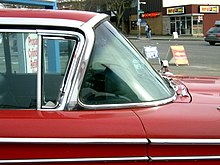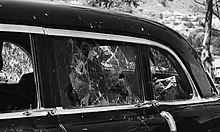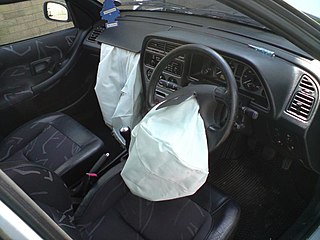
An airbag is a vehicle occupant-restraint system using a bag designed to inflate exceptionally quickly and then deflate during a collision. It consists of an airbag cushion, a flexible fabric bag, an inflation module, and an impact sensor. The purpose of the airbag is to provide a vehicle occupant with soft cushioning and restraint during a collision. It can reduce injuries between the flailing occupant and the vehicle's interior.
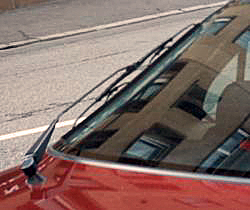
A windscreen wiper or windshield wiper is a device used to remove rain, snow, ice, washer fluid, water, or debris from a vehicle's front window. Almost all motor vehicles, including cars, trucks, buses, train locomotives, and watercraft with a cabin—and some aircraft—are equipped with one or more such wipers, which are usually a legal requirement.
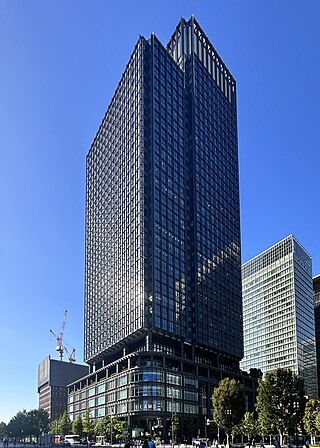
AGC Inc., formerly Asahi Glass Co., Ltd.'(旭硝子株式会社), is a Japanese global glass manufacturing company, headquartered in Tokyo. It is the largest glass company in the world and one of the core Mitsubishi companies.

Lamination is the technique/process of manufacturing a material in multiple layers, so that the composite material achieves improved strength, stability, sound insulation, appearance, or other properties from the use of the differing materials, such as plastic. A laminate is a layered object or material assembled using heat, pressure, welding, or adhesives. Various coating machines, machine presses and calendering equipment are used.

Polyvinyl butyral is a resin mostly used for applications that require strong binding, optical clarity, adhesion to many surfaces, toughness and flexibility. It is prepared from polyvinyl alcohol by reaction with butyraldehyde. The major application is laminated safety glass for automobile windshields. Trade names for PVB-films include KB PVB, GUTMANN PVB, Saflex, GlasNovations, Butacite, WINLITE, S-Lec, Trosifol and EVERLAM. PVB is also available as 3D printer filament that is stronger and more heat resistant than polylactic acid (PLA).

A window film, sometimes called tint, is a thin laminate film that can be installed on the interior or exterior of glass surfaces in automobiles and boats, and as well as on the interior or exterior of glass in homes and buildings. It is usually made from polyethylene terephthalate (PET), a thermoplastic polymer resin of the polyester family, due to its clarity, tensile strength, dimensional stability, and ability to accept a variety of surface-applied or embedded treatments.
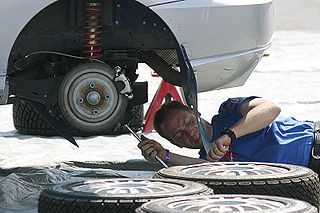
An auto mechanic is a mechanic who services and repairs automobiles, sometimes specializing in one or more automobile brands or sometimes working with any brand. In fixing cars, their main role is to diagnose and repair the problem accurately and quickly. Seasoned auto repair shops start with a (Digital) Inspection to determine the vehicle conditions, independent of the customers concern. Based on the concern, the inspection results and preventative maintenance needs, the mechanic/technician returns the findings to the service advisor who then gets approval for any or all of the proposed work. The approved work will be assigned to the mechanic on a work order. Their work may involve the repair of a specific part or the replacement of one or more parts as assemblies. Basic vehicle maintenance is a fundamental part of a mechanic's work in modern industrialized countries, while in others they are only consulted when a vehicle is already showing signs of malfunction.

The pillars on a car with permanent roof body style are the vertical or nearly vertical supports of its window area or greenhouse—designated respectively as the A, B, C and D-pillar, moving from front to rear, in profile view.

Safety glass is glass with additional safety features that make it less likely to break, or less likely to pose a threat when broken. Common designs include toughened glass, laminated glass, and wire mesh glass. Toughened glass was invented in 1874 by Francois Barthelemy Alfred Royer de la Bastie. Wire mesh glass was invented in 1892 by Frank Shuman. Laminated glass was invented in 1903 by the French chemist Édouard Bénédictus (1878–1930).

Windshield washer fluid is a fluid for motor vehicles that is used in cleaning the windshield with the windshield wiper while the vehicle is being driven.

Tempered or toughened glass is a type of safety glass processed by controlled thermal or chemical treatments to increase its strength compared with normal glass. Tempering puts the outer surfaces into compression and the interior into tension. Such stresses cause the glass, when broken, to shatter into small granular chunks instead of splintering into jagged shards as ordinary annealed glass does. The granular chunks are less likely to cause injury.
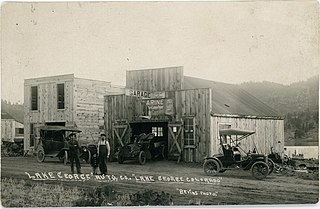
An automobile repair shop is an establishment where automobiles are repaired by auto mechanics and technicians. The customer interface is typically a service advisor, traditionally called a service writer.

Laminated glass is a type of safety glass consisting of two or more layers of glass with one or more thin polymer interlayers between them which prevent the glass from breaking into large sharp pieces. Breaking produces a characteristic "spider web" cracking pattern when the impact is not enough to completely pierce the glass.

Speed tape is an aluminium pressure-sensitive tape used to perform minor repairs on aircraft and racing cars. It is used as a temporary repair material until a more permanent repair can be carried out. It has an appearance similar to duct tape, for which it is sometimes mistaken, but its adhesive is capable of sticking on an airplane fuselage or wing at high speeds, hence the name.
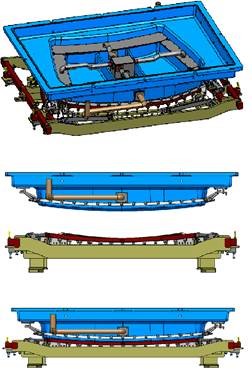
Vehicle glass is glass used to provide light access to motor vehicles. It includes windscreens, side and rear windows, and glass panel roofs.
Triplex Safety Glass was a British brand of toughened glass and laminated glass. The marque is often seen on vehicle and aircraft windscreens.
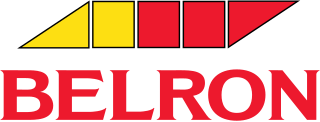
Belron International Limited is a British vehicle glass repair and replacement group operating worldwide across 34 countries and employing over 25,000 people. Headquartered in Egham, Surrey, United Kingdom, Belron's brands include Autoglass in the United Kingdom, Ireland, and Poland, Carglass in most of Europe, O'Brien AutoGlass in Australia, Safelite in the United States, Smith & Smith in New Zealand, and Lebeau and Speedy Glass in Canada.
Windshield sun shades are protective shields attached to a car's windshield or side window to keep the sun from reaching the interior and help reduce the temperature inside it.
Composite glass is the collective term for a laminate having at least two glass panes which are in each case connected by means of an adhesive intermediate layer composed of plastic, e.g. by means of a casting resin or a thermoplastic composite film, which is highly tear-resistant and is viscoelastic. Composite glass should not be confused with composite windows.
NordGlass, is a Polish manufacturer of windshields for the repair of passenger cars and trucks, work machinery, railways, ships and military. Headquartered in Koszalin, it has 2 plants: Koszalin and Słupsk, employs over 1,000 employees, has a nationwide network of repair and replacement of car windows. Since 2015, it is a subsidiary of AGC Inc. – the largest glass company in the world and one of the core Mitsubishi companies.
